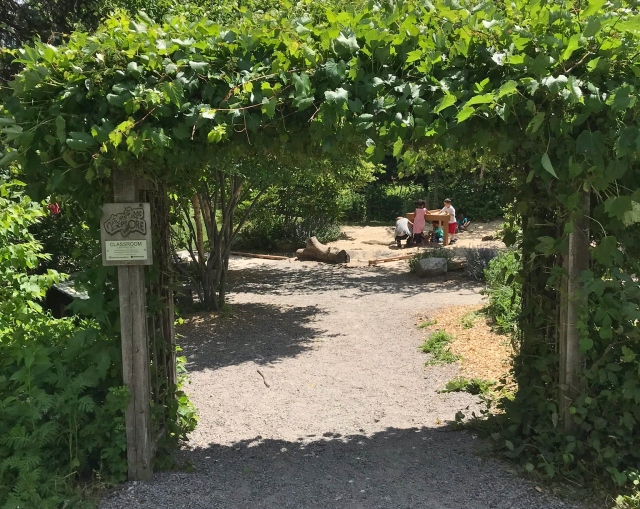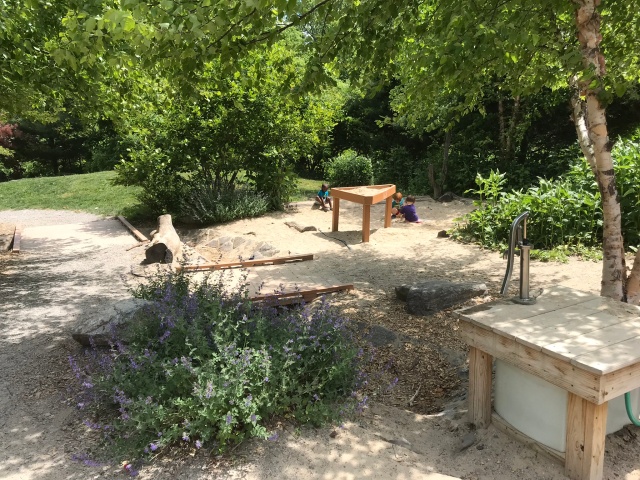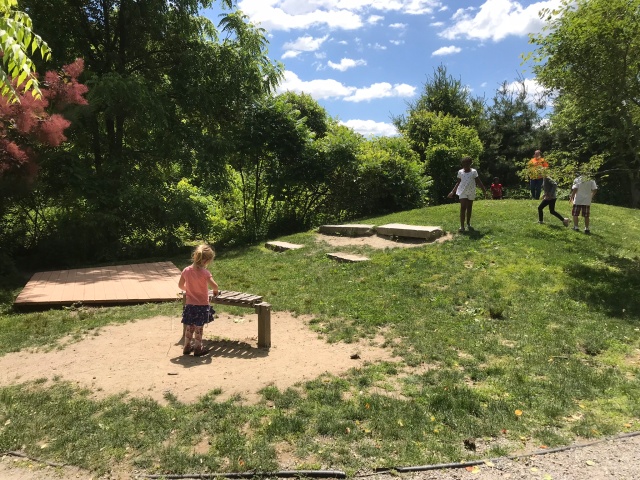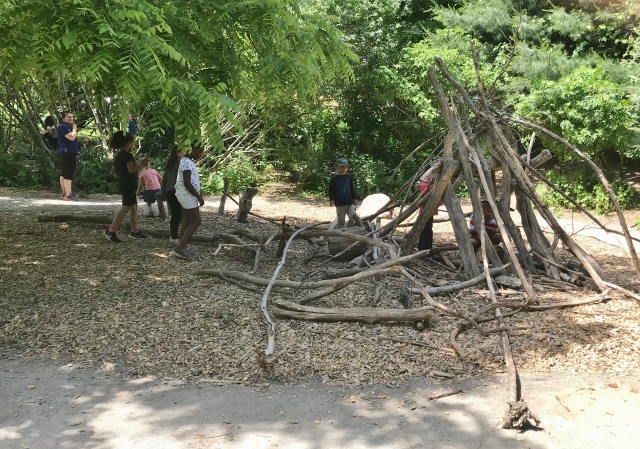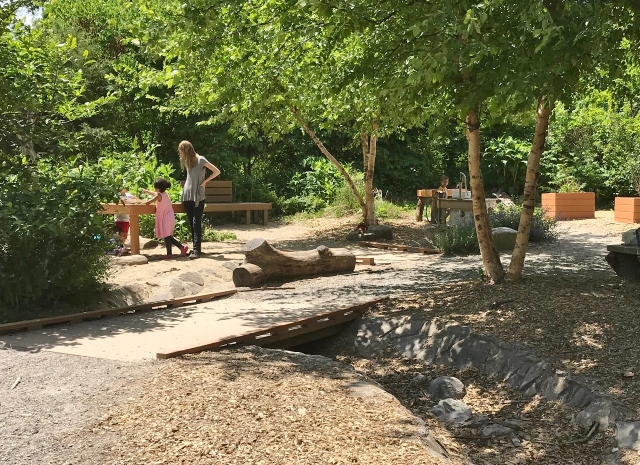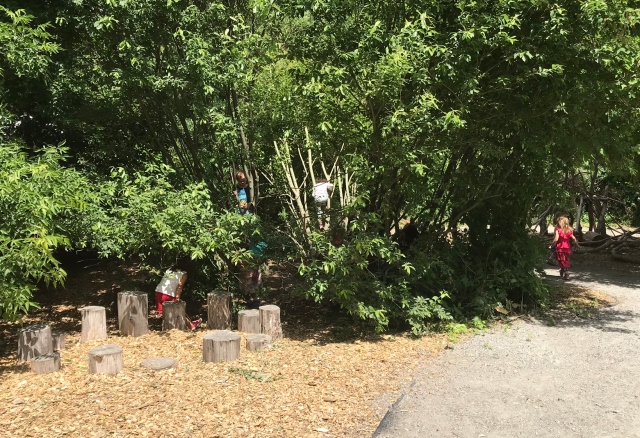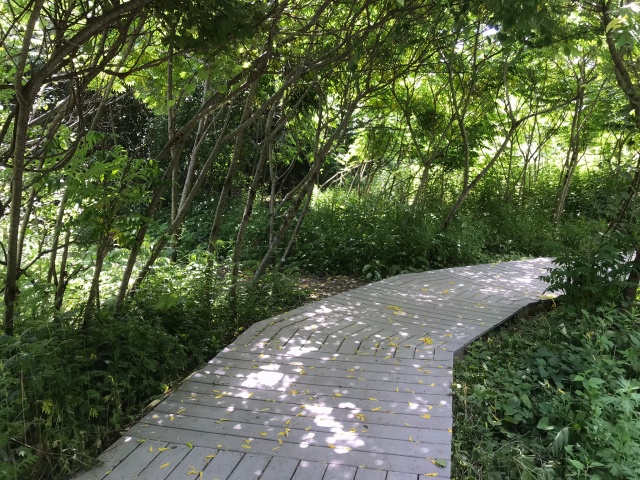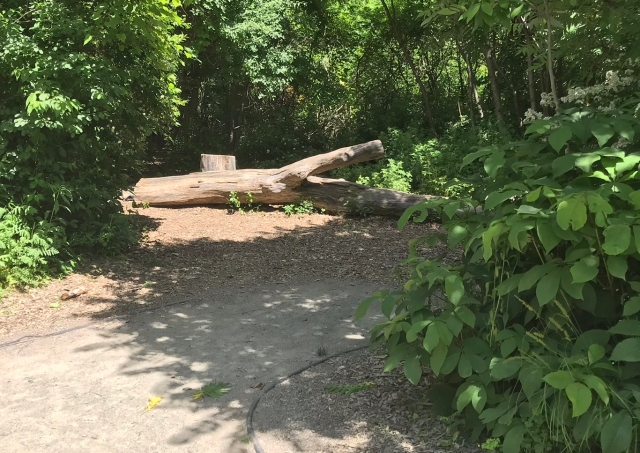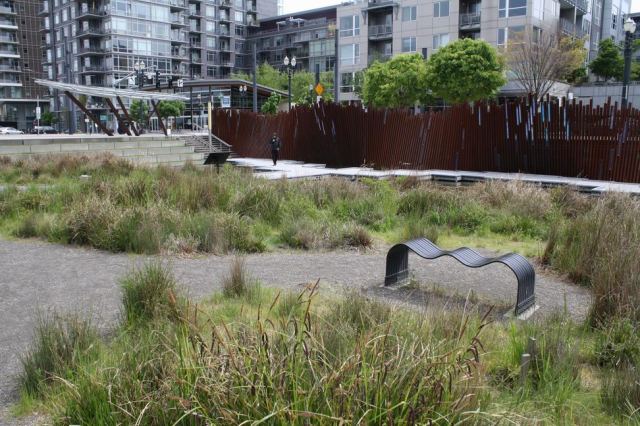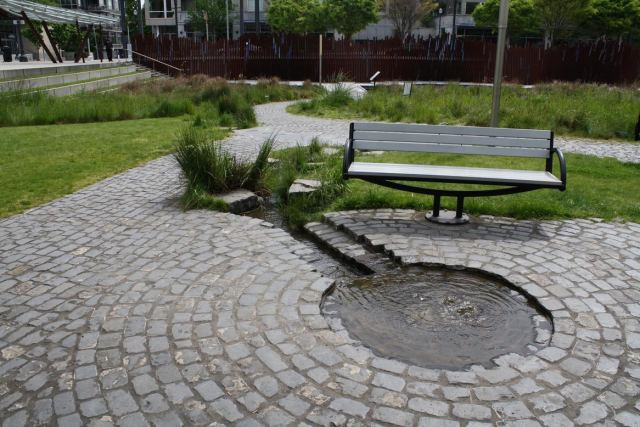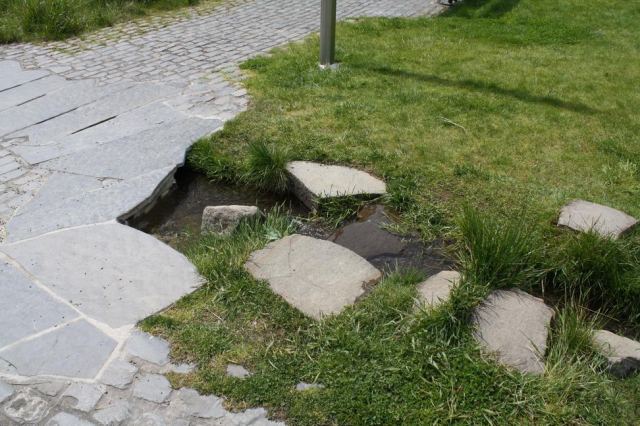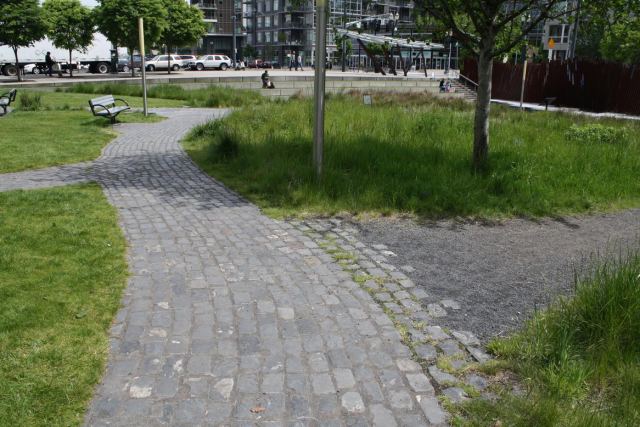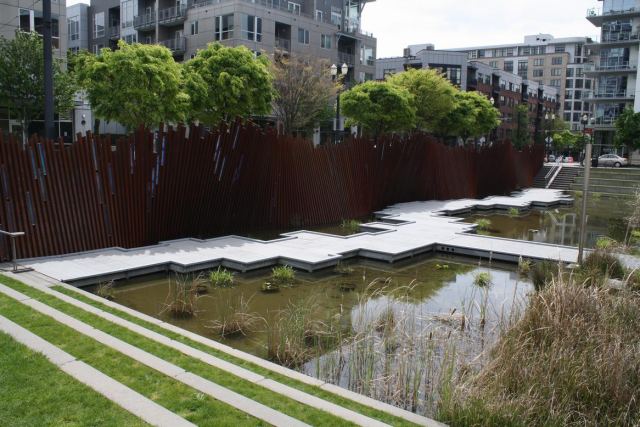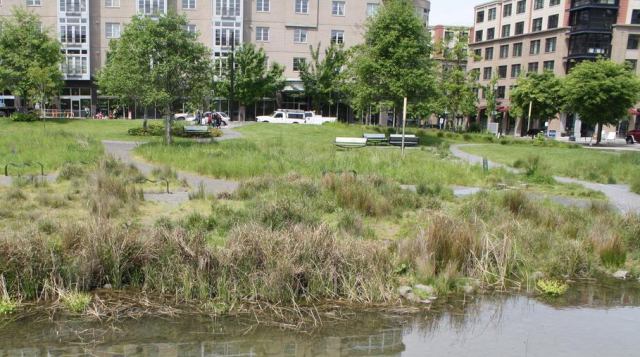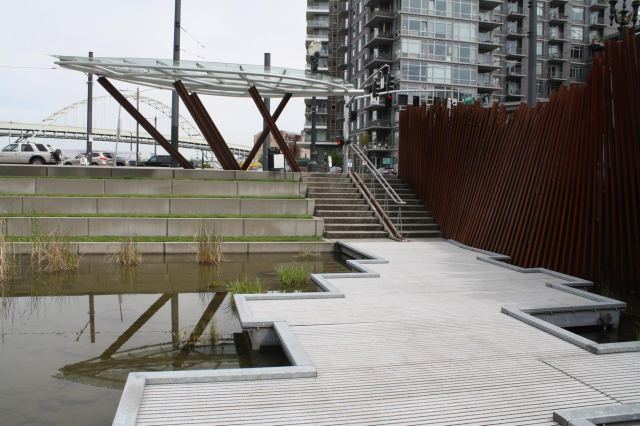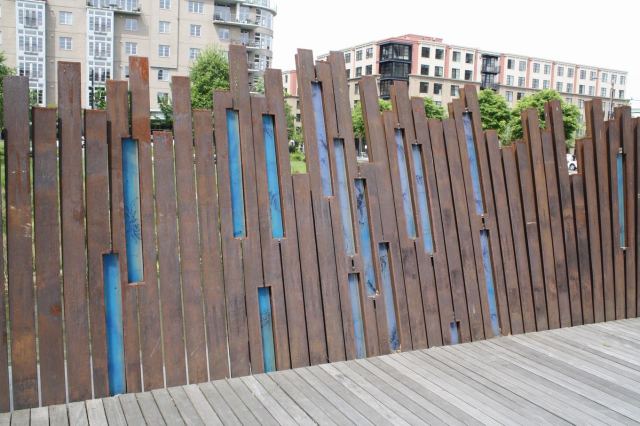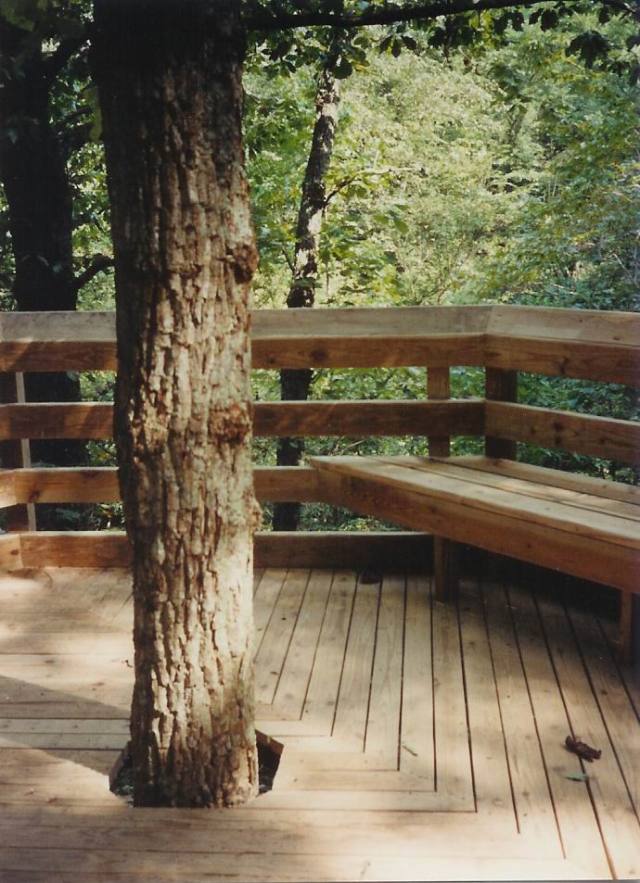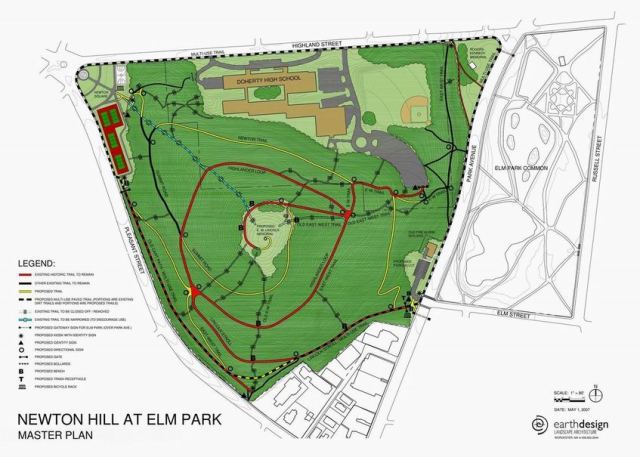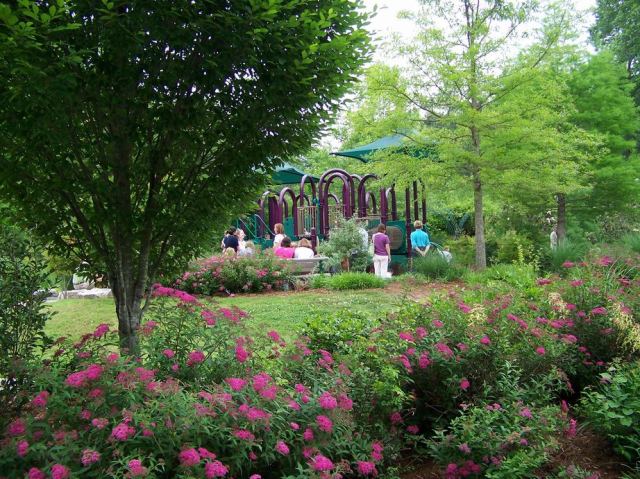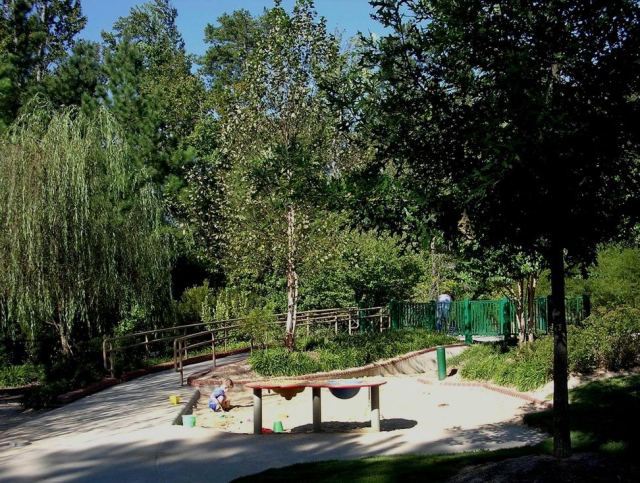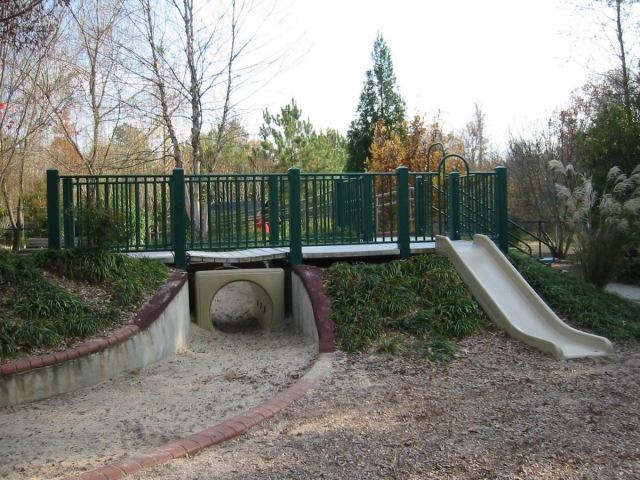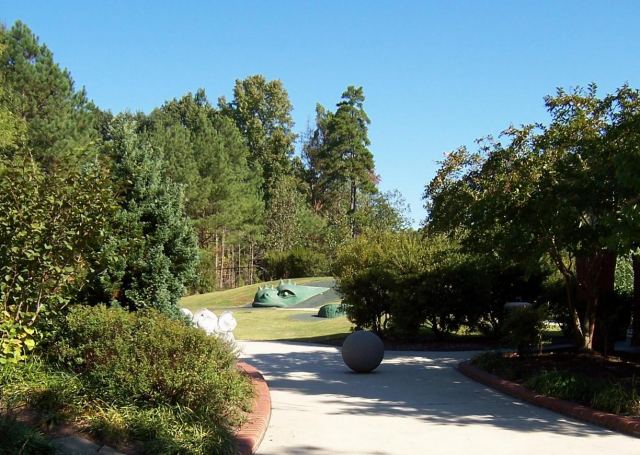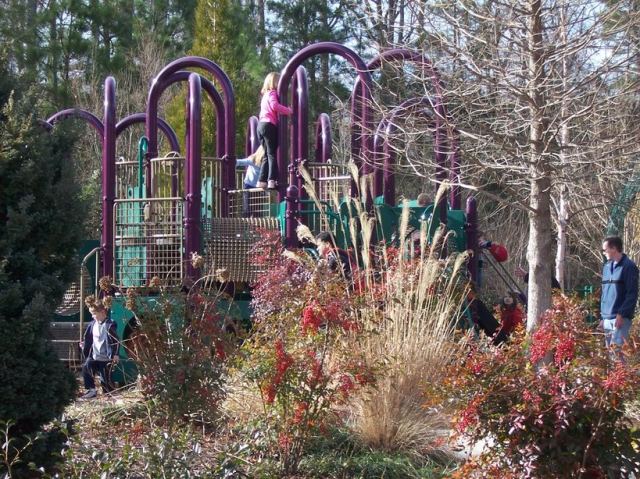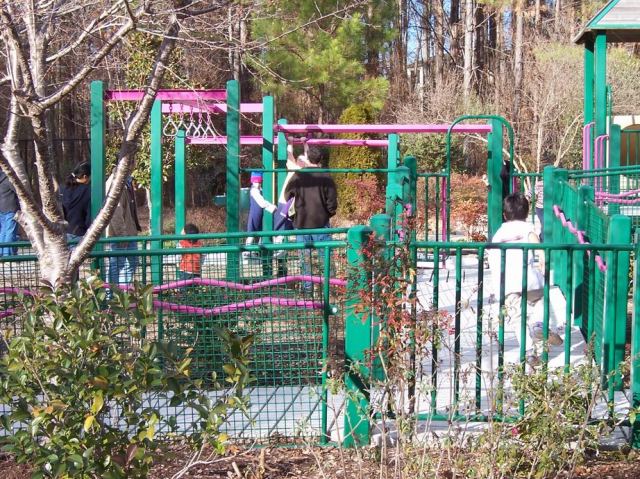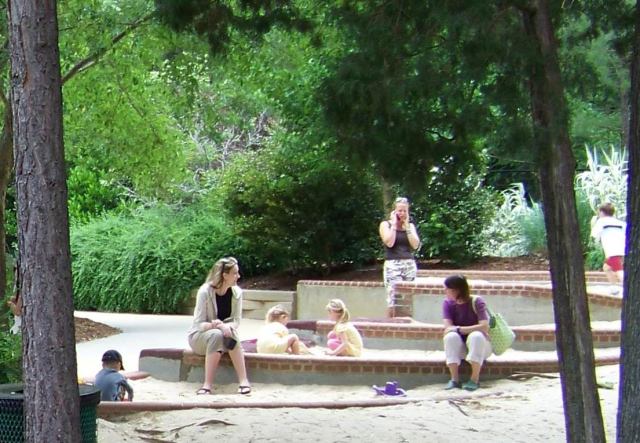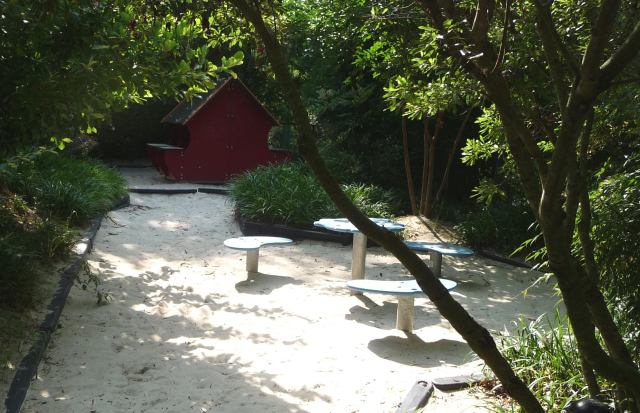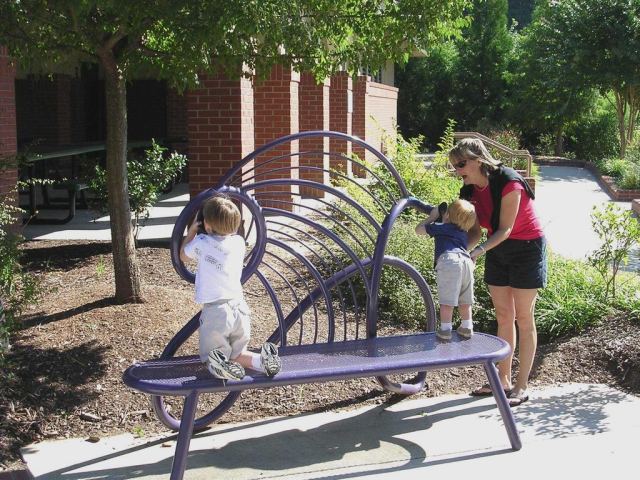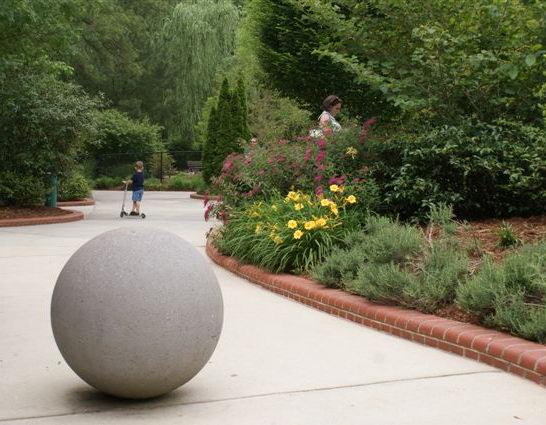I’m a strong advocate of giving kids opportunities to play in natural settings, and am working on convincing more of my clients to include natural elements in children’s playgrounds that I design. Last year I wrote an article about this topic for the New England Park Association’s spring newsletter, which is abbreviated below.
Many of today’s children spend too much time indoors or in planned activities, which has led to high levels of attention disorders and depression. Unstructured outdoor play is very important for kids, as there is a growing body of scientific evidence that free play, particularly in natural settings, has many cognitive, social, and emotional benefits. One solution is to allow children to play freely in natural areas, but to go a step further, natural features can be incorporated into playgrounds. In contrast to open natural settings, playgrounds can provide a more secure, bounded area which adults may prefer, particularly for younger children. This objective can be met by providing natural settings and elements in the play area, such as grass hills, sand play areas, water, rocks, plants, and wood.
Of all the natural elements that can be provided in playgrounds, plants are one of the most beneficial. Shrubs and tall ornamental grasses are great for hide-and-seek games, and plants of all types can provide loose parts for imaginative play, such as cones, seeds, leaves, and sticks. They can also form the boundaries of play spaces within a playground. Plants help to develop the senses, they stimulate exploration, and they foster appreciation for the natural environment. Other advantages include protection from sun and wind, erosion control, and making the playground more visually attractive for both children and adults.
Including hills and other variations in topography can promote a lot of enjoyment in playgrounds. These provide varied spatial experiences, and encourage climbing, running, and rolling. Slides can even be incorporated into hillsides, and accessible routes can be constructed to the tops of these slides. Bridges can also be built between a hill or higher elevation and the upper level of a play structure, which facilitates wheelchair access into the structure, and adds fun to the play experience. Hills and mounds make a playground more interesting, and are also great for sledding in winter.
Sand areas are very popular with younger children, and they foster creative play since sand can be molded into all types of things. It is important to include a water source in the sand area, such as a button-operated or pump-activated “jug filler”, for this purpose. Sand play areas are also great for social interaction among children. For wheelchair accessibility, raised sand tables can be provided, or an entire sand area could be raised to allow wheelchair users to transfer onto the edge and into the sand.
Water features can also greatly enhance the play experience, particularly if they mimic natural aquatic systems. Devices activated with buttons or pumps could be used to discharge water into a shallow hard-surfaced channel at ground level or a series of raised troughs or terraces. These could be built in combination with spray elements, and all of this water could then be chlorinated and recirculated. If safety is a concern, all of these water play features could be zero-depth.
Rocks and wood are other natural elements that are fun and engaging, and they can be inexpensive to incorporate if obtained on the property. Including these in sand areas, along with plants, creates an even more stimulating play environment. Some examples of uses for rocks and wood include raised stepping stones and stumps, seating areas, tables, and climbing objects. Several adjacent rocks could also be anchored into hillsides for added challenge and excitement.
When children play in natural settings, they tend to be quite imaginative and create their own games, which makes the whole experience especially enjoyable. Including natural components in playgrounds is a great way to give children this exposure on a regular basis, and it is a relatively low-cost means of adding lots of play value.
